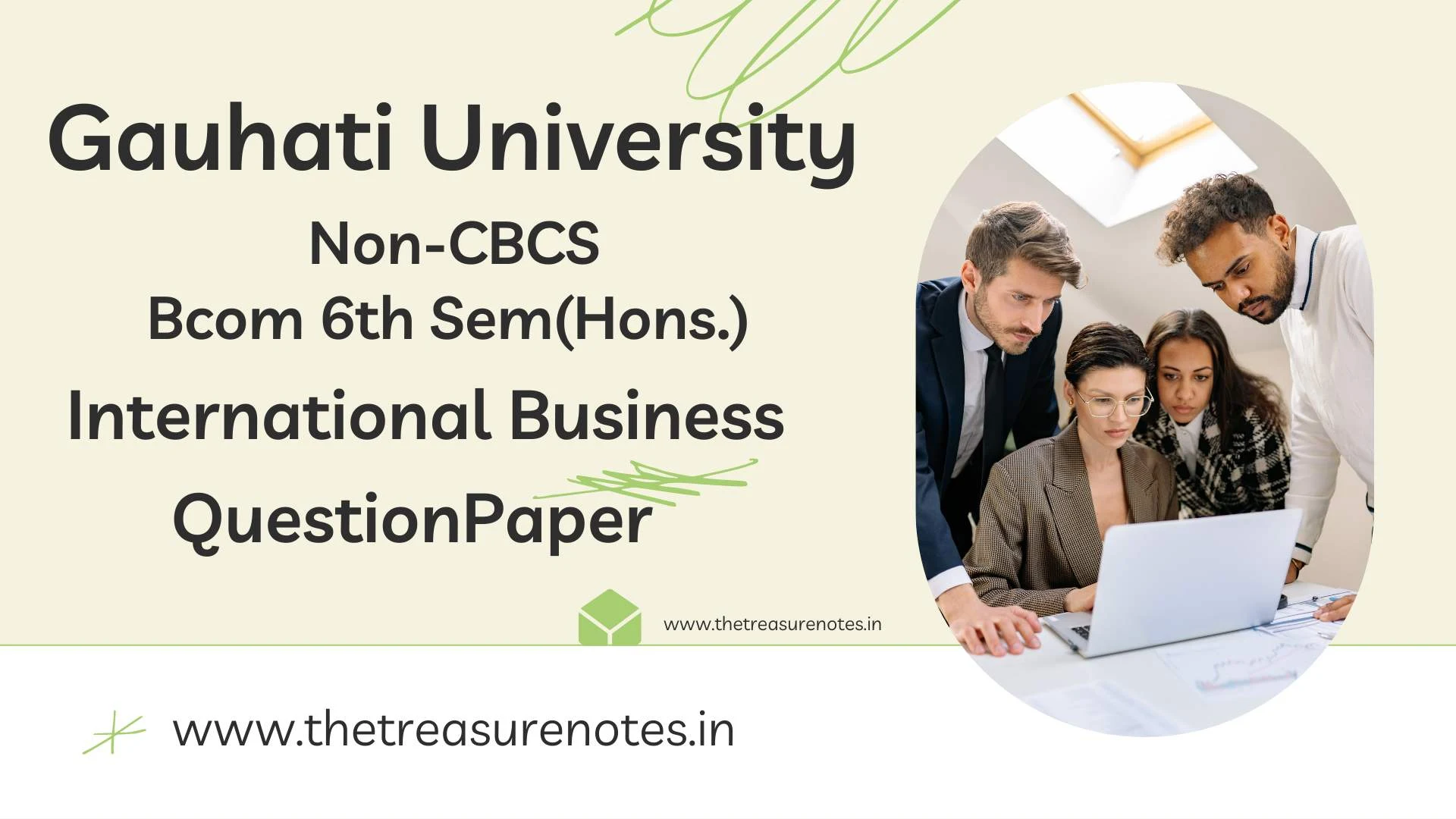In this Post we have uploaded International Business (International Trade) Question Paper 2015 Non-CBCS, B.Com 6th Sem Gauhati University (GU). which Can be Very Useful For Your GU B.Com 6th Semester Sessional or Final Semester Examination. B.com 6th International Business Question paper 2015 in PDF Gauhati University (GU).
International Business Questions Paper '2015 GU 6th Sem B.com 6th Sem Non-CBCS Pettern | Gauhati University |
Gauhati University Question Papers: International Trade (Major) (Nov-Dec’ 2015)
2015
INTERNATIONAL TRADE
(MAJOR)
Full Marks: 80
Time: 3 hours
(The figures in the margin indicate full marks for the questions)
1. [A] Select the most appropriate answer from the choices given against each: 1x5=5
1) Which of the following states the main functions of WTO?
a) The promotion of free trade and economic liberalism.
b) The administration of the international trade agreement and the resolution of international trade disputes.
c) The promotion of world peace, economic stability and financial co-operation.
d) The administration of WTO’s institutional framework and the promotion of economic co-opeeration amongst its members.
2) Quantitative restriction refers to the limits set by countries to curb:
a) Imports.
b) Exports.
c) Imports and exports.
d) None of the above.
3) “Product life cycle theory states that an exporting country of a particular product can becomes an importing country during the product cycle of a product.” This statement is
a) True.
b) False.
4) _______ states that, lack of resources often helps countries to become competitive.
a) Competitive theory.
b) Porters Diamond Model.
c) Mercantalism theory.
d) Product life cycle theory.
5) When the exporter expects the importer to make the payment immediately upon that draft being presented to him is called:
a) Sight Draft.
b) Usance Draft.
c) Demand Draft.
d) Pay note.
[B] Answer the following in one sentence each: 1x5=5
a) Give an example of direct foreign exchange quote.
b) In foreign exchange rate quotation what is ‘ask rate’?
c) Mention two non-tariff barriers.
d) The abbreviation FEMA stands for?
e) What is Confirmed Letter of Credit?
2. Answer the following in about 50 words each: 2x5=10
1) What do you mean by ‘dumping’?
2) State the meaning of ‘embargo’.
3) What is bill of lading?
4) What is the main purpose of Special economic Zones?
5) Write the meaning of ‘nostro account’.
3. Answer any four of the following in about 150 words each: 5x4=20
a) Discuss the various types of tariffs.
b) Write a short note on Most Favoured Nations (MFN).
c) Briefly discuss the floating exchange rate’ system.
d) Does purchasing power parity theory explain the exchange rate? Discuss in brief.
e) Explain the factors which led to creation of GATT.
f) Discuss the salient features of ‘Free Trade Area’.
4. Answer the following in about 600 words each: 10x4=40
(a) Critically discuss the opportunity cost theory on international trade. 10
Or
Discuss the gains from international trade. 10
(b) Explain the concept of ‘optimum tariff’. 10
Or
What is ‘import quota’? How does it differ from ‘tariff’? 10
(c) What is ‘exchange control’? Explain the various methods of exchange control. 2+8=10
Or
Discuss the impact of various Export and Import; (EXIM) policies on Indian economy. 10
(d) Explain the main features of World Trade Organisation. 10
Or
Define ‘green field investment’. Discuss its advantages and disadvantages. 2+8=10
-000-

